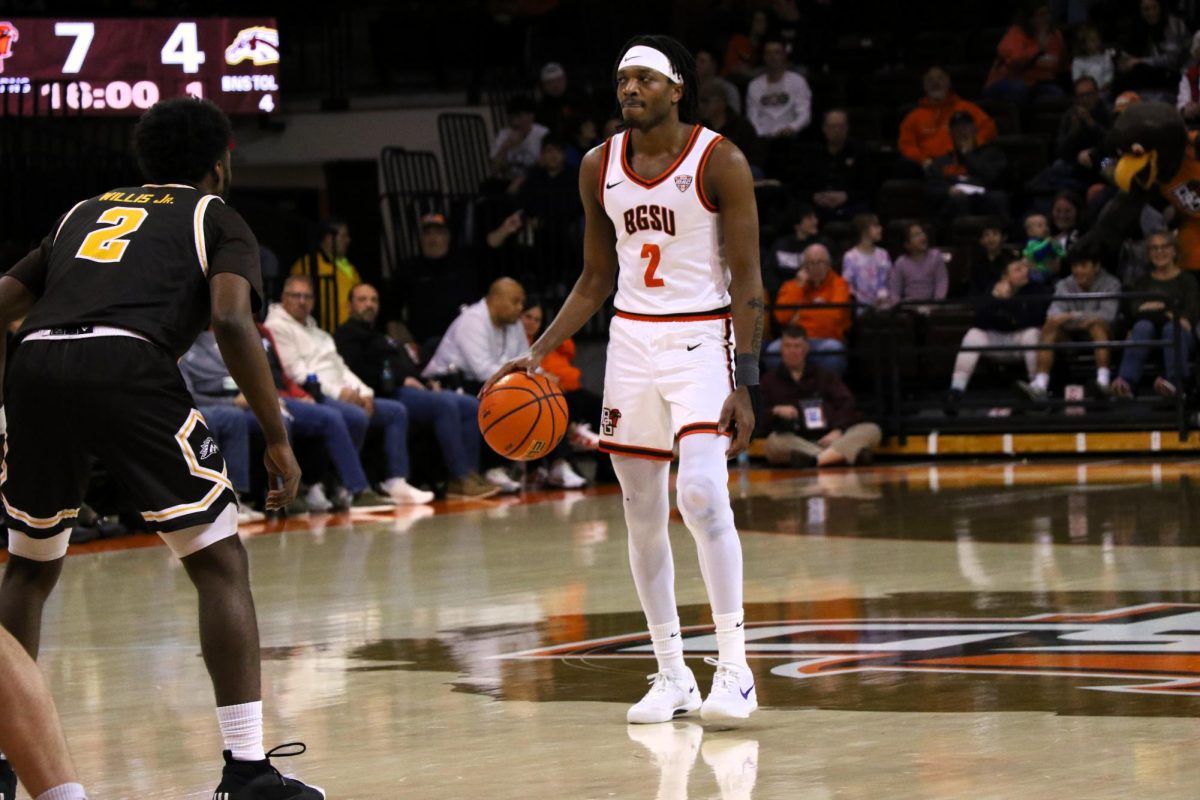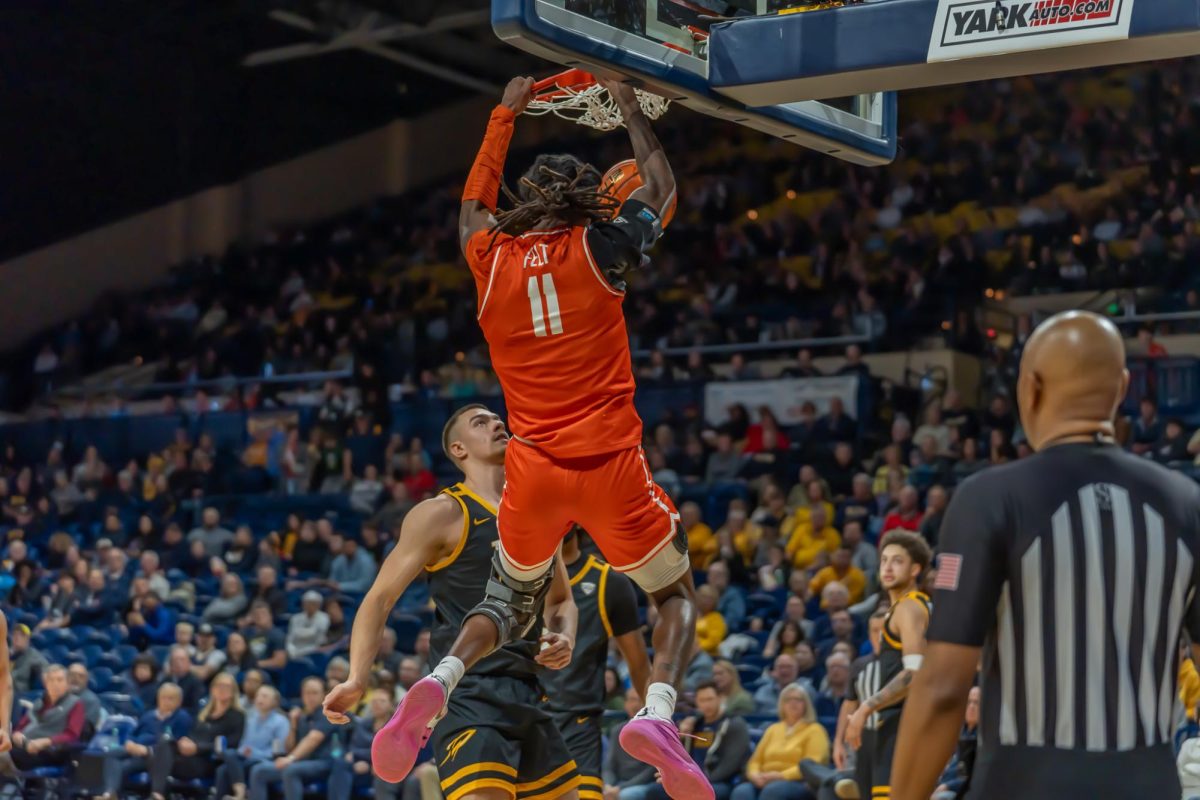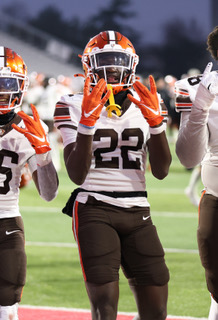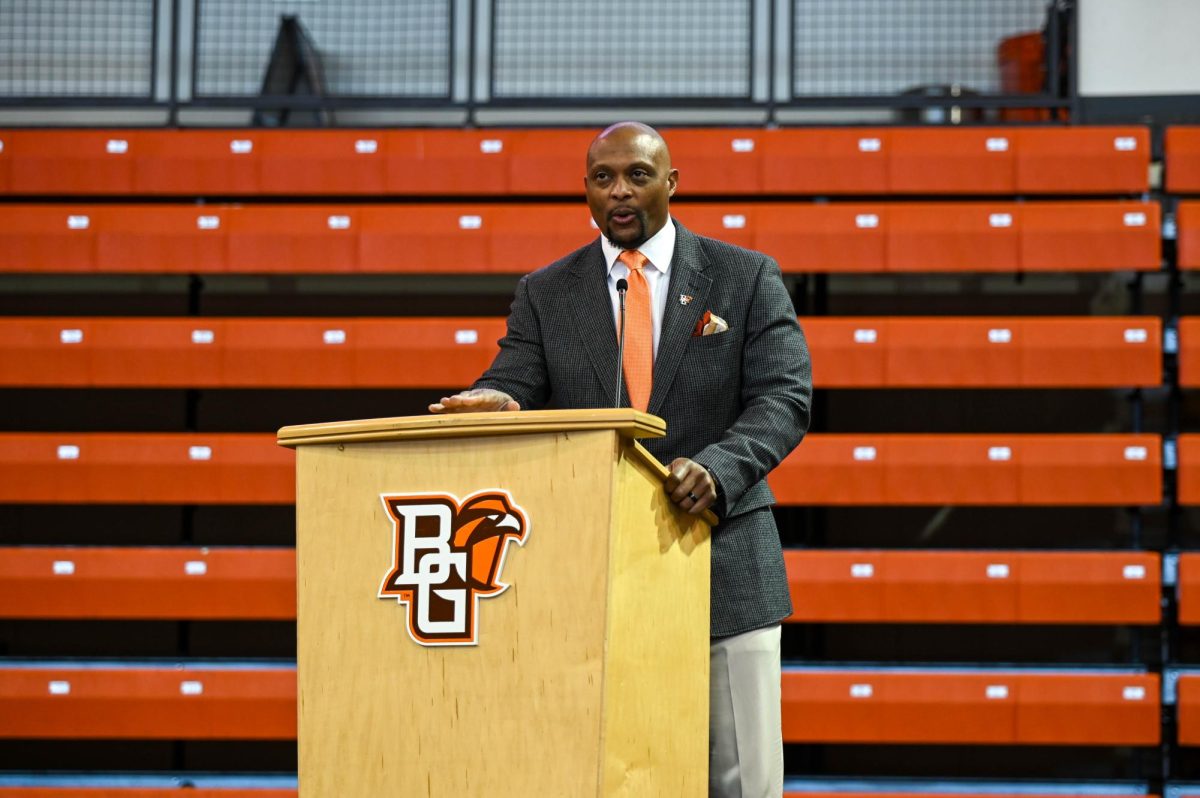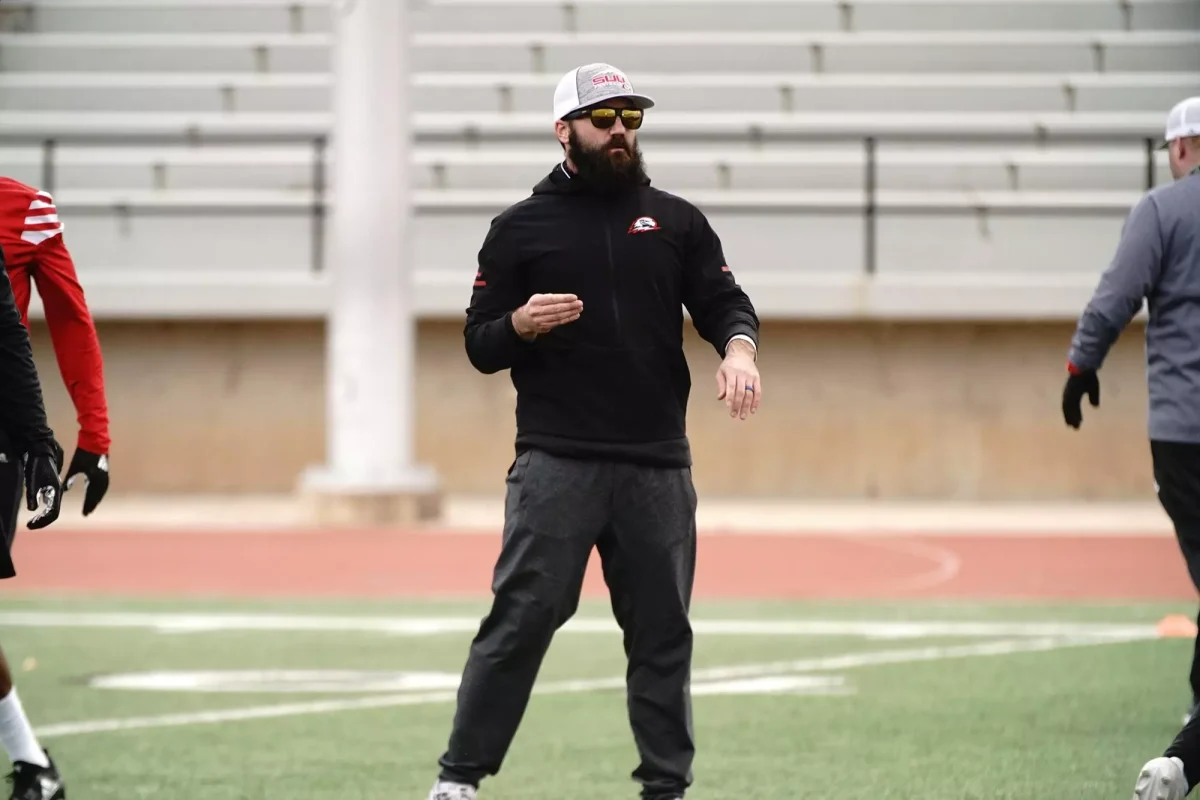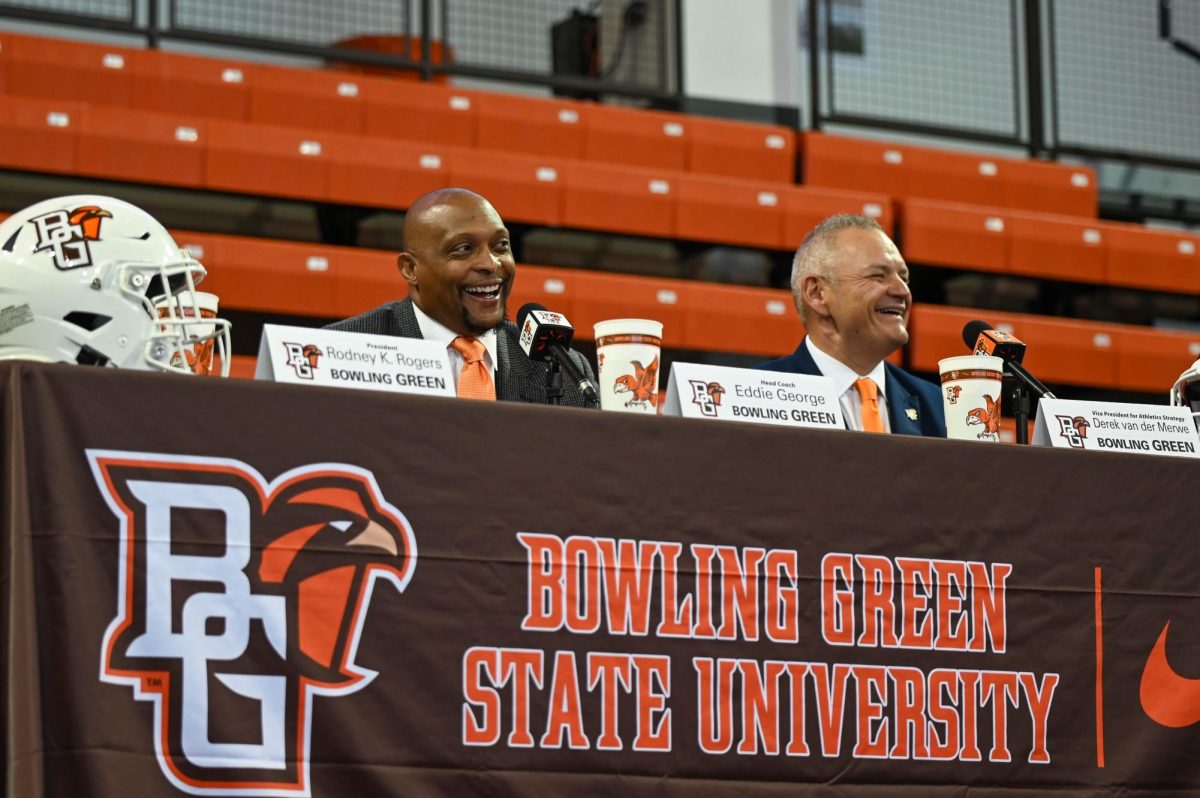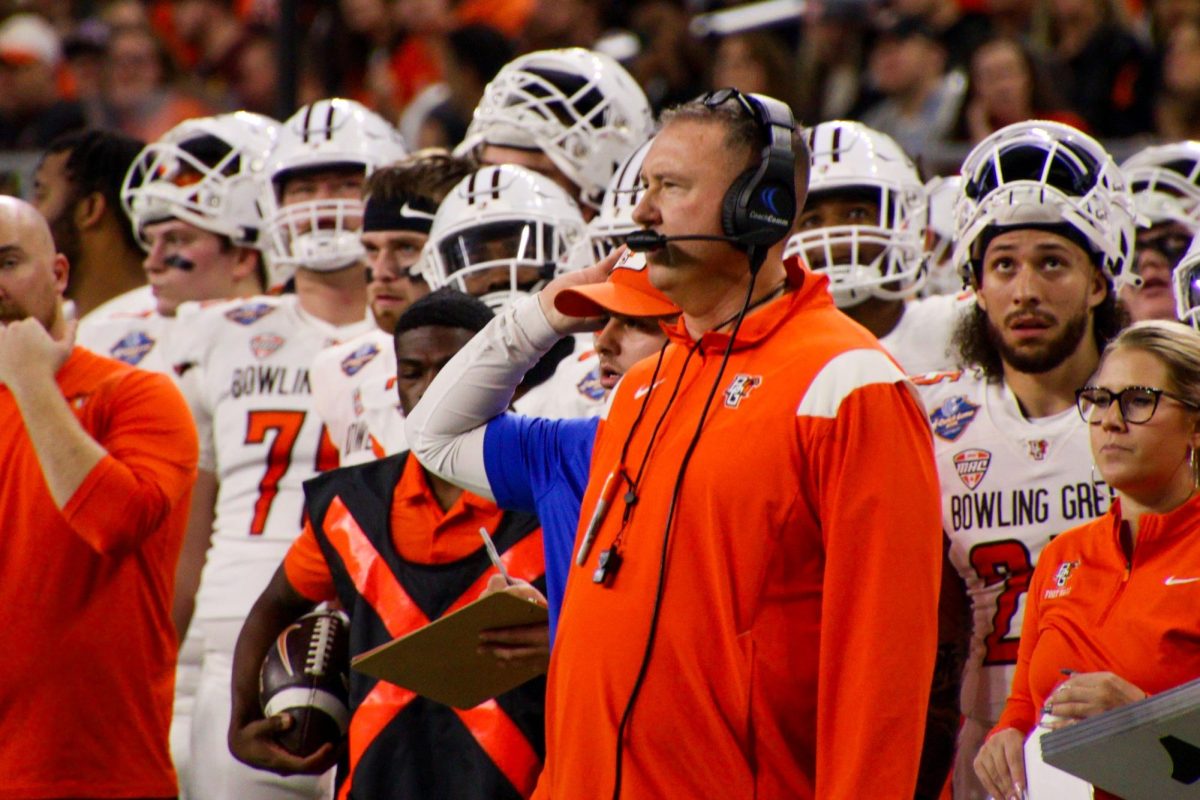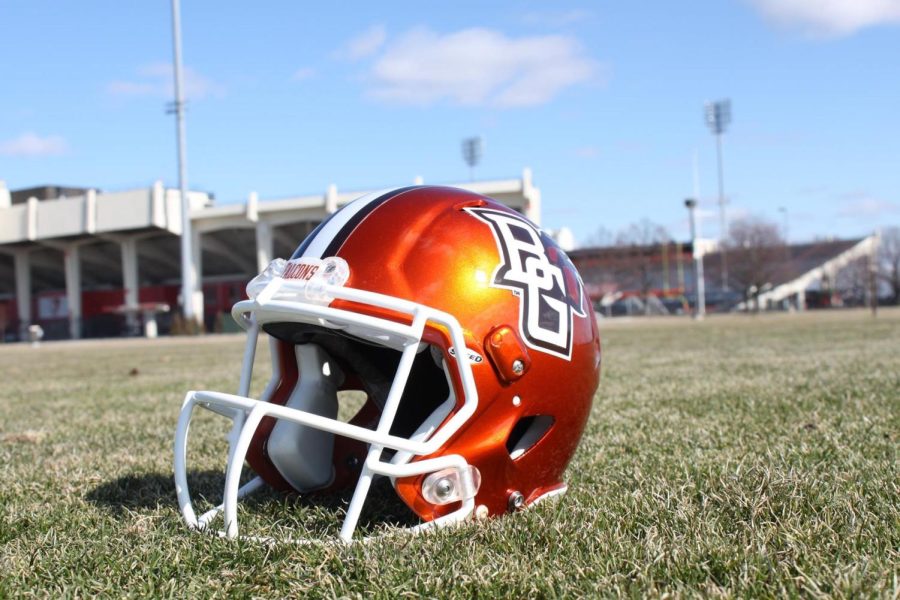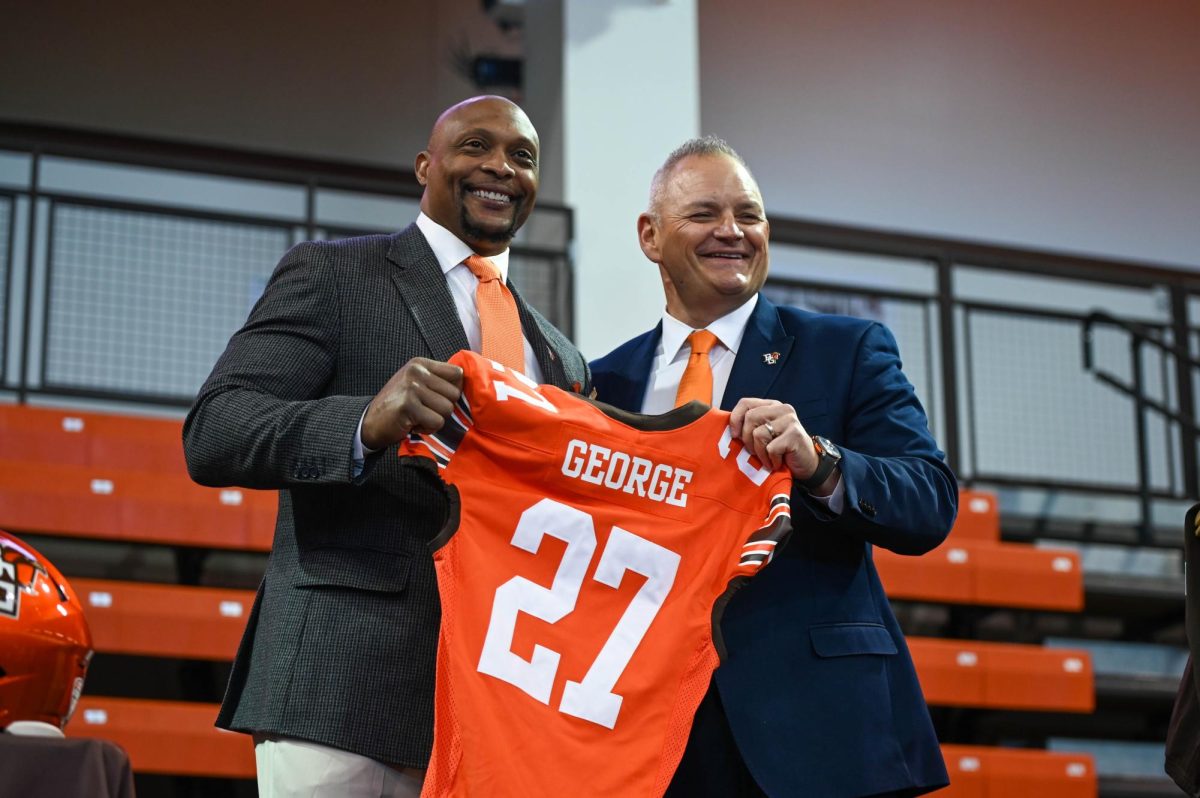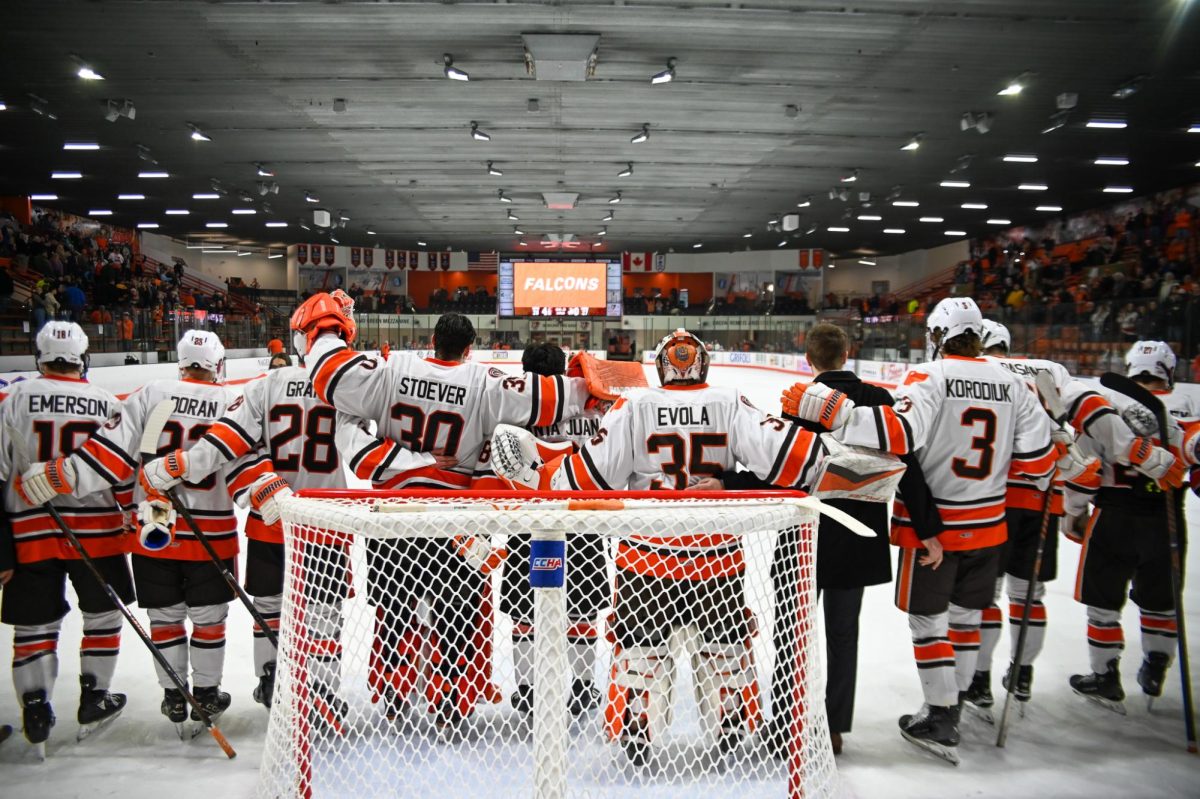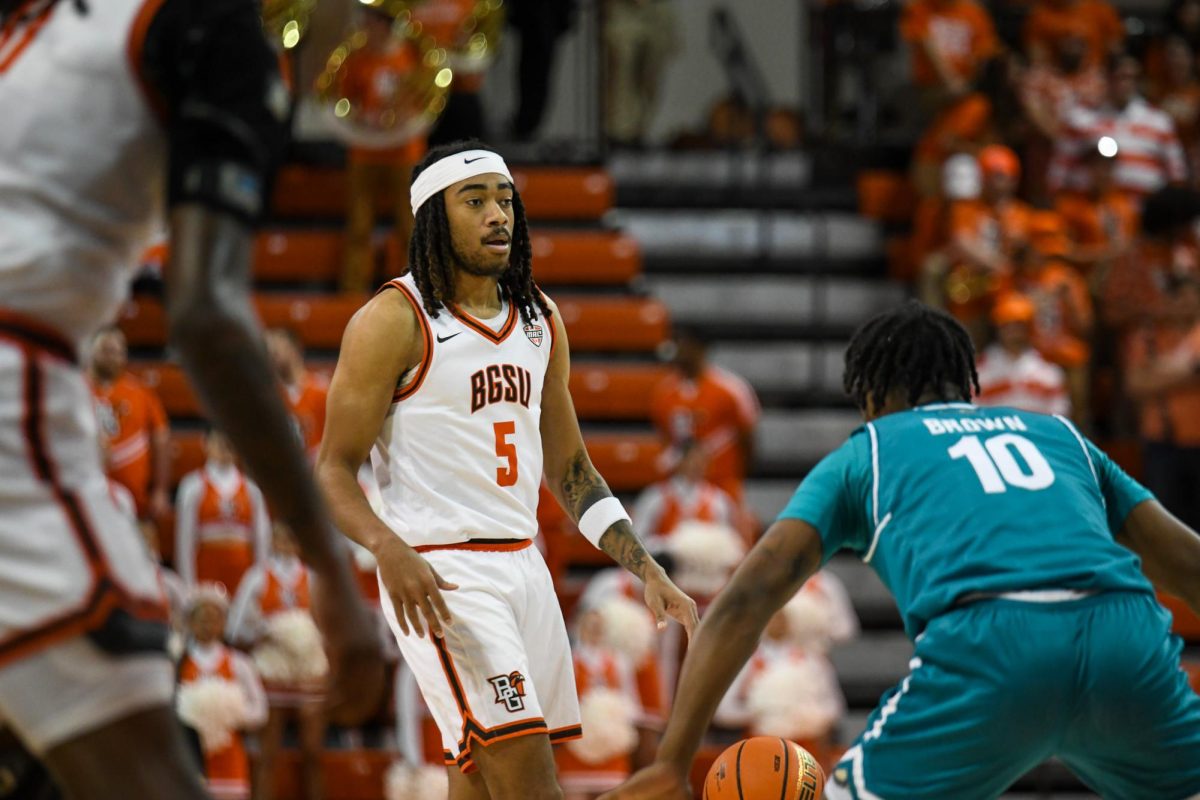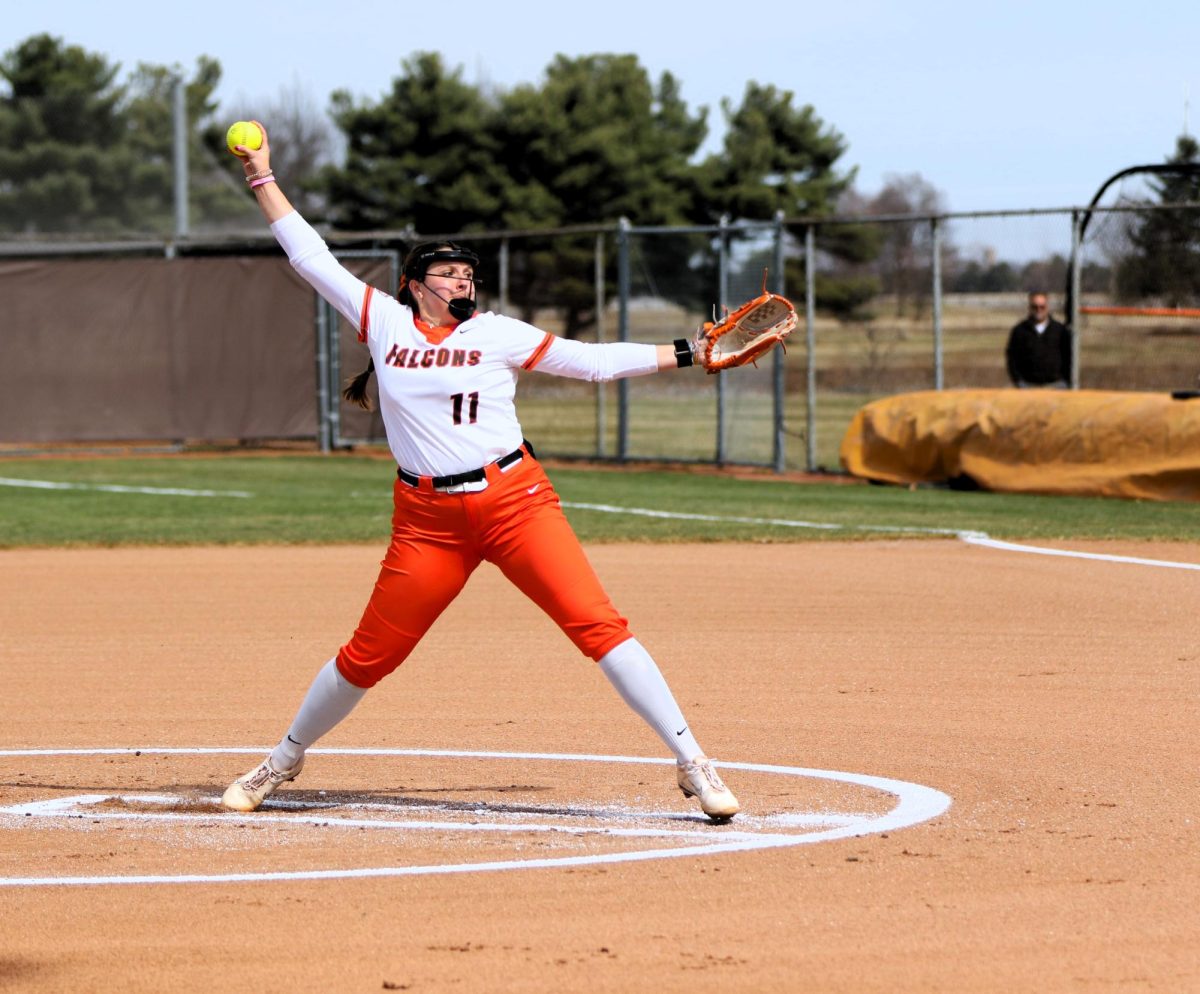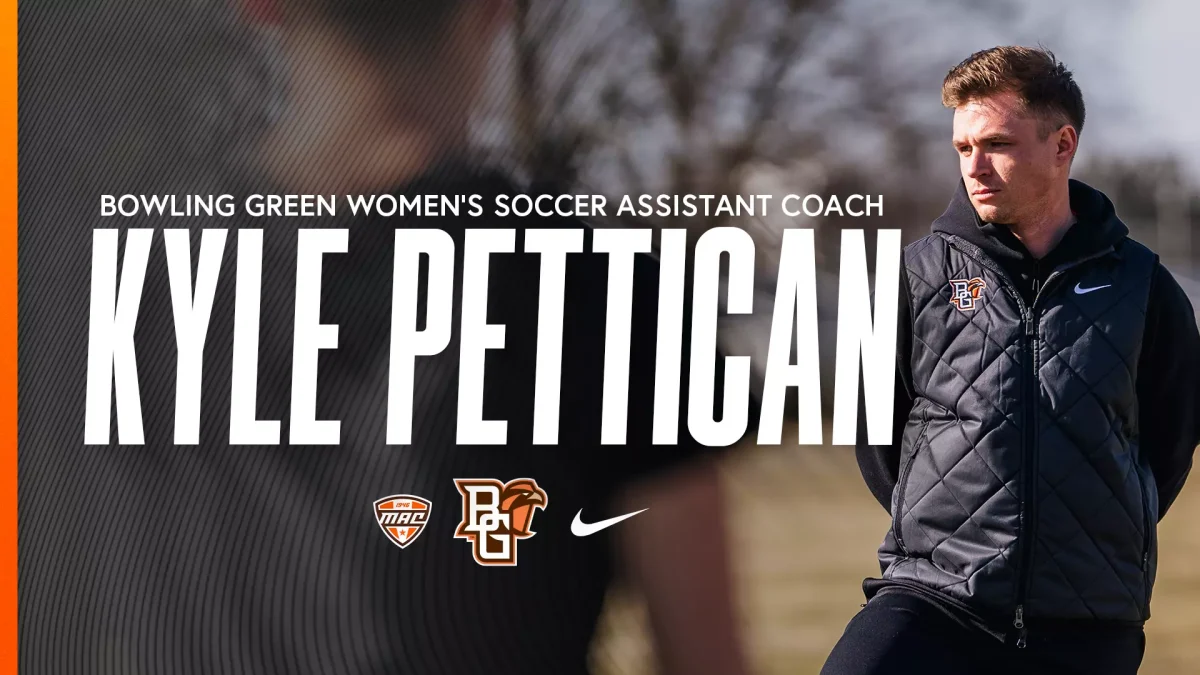For many collegiate athletes, the four-year path is relatively linear regardless of the sport they play.
You’re recruited as one position; you play that position for all four, five or six-plus years you’re at the college level. You graduate and either move on to the professional rank or, alternatively, you move into the workforce.
However, that story does not hold true 100% of the time.
Nate Pabst, a redshirt junior offensive lineman on the Bowling Green football team, is an exemplary example of the non-linear path of the college athlete.
“It’s been a long [road]. He actually started in gymnastics when he was 18 months old. Obviously, because of his size, I didn’t think he was going to be a gymnast,” Nate Pabst’s mother, Stephanie Pabst said. “It was just something that would provide feedback and also to be able to listen and accept feedback from people who aren’t his parents. And then he dabbled in soccer, and tee-ball, and things like that that never stuck.”
Stephanie Pabst and her husband, Robert, had hoped from day one that Nate Pabst would be a football player.
After all, he was born on Jan. 3, 2003 – the day the No. 2 Ohio State Buckeyes toppled the No. 1 Miami Hurricanes in two overtimes to win the BCS National Championship.
Hailing from Springdale, Ohio, a suburb of Cincinnati, Pabst’s first love wasn’t football. Actually, it didn’t feature a ball of any sort.
“Where we used to live, we had a rec center that had a fishbowl aerobic room where three of the walls were windows. They held a youth karate class there a couple of nights a week. When we’d be at the rec for other things, he would see this karate class and he begged for us to take karate. He started when he was six,” Stephanie Pabst said.
But what drew Nate Pabst to martial arts? As a kid growing up in the early/mid-2000s, the answer was pretty simple.
“I started martial arts when I was a little kid because I loved the [Teenage Mutant] Ninja Turtles,” Nate Pabst said. “I always wanted to be one. It ended up growing into something that I really loved and really enjoyed doing.”
However, Nate Pabst’s instructors did not see a future for him in the sport.
“His instructor, after a couple of classes, pulled my husband and I aside and said, ‘You know, you can keep him in martial arts, but we don’t think that he has any talent. We don’t think he’s going to be very good at this, but if you want to keep bringing him, we’ll keep teaching him,” Stephanie Pabst continued.
Despite the criticism from his instructor, Nate Pabst stayed in martial arts, which proved to be a decision that ended up paying dividends.
“My response was, ‘That’s okay, he’s going to play football anyways; this is just something that we’re doing to fill the gap before the football season starts.’ [His instructors] were wrong – he actually became a quite accomplished martial artist. He earned his black belt when he was 11, all while playing football every year for a youth program. He won 10 U.S. national titles and three world titles,” Stephanie Pabst said.
Nate Pabst holds a black belt in tang soo do, a Korean-based martial art that focuses on ‘stand-up striking and grappling with hands and feet,’ according to him.
He excelled in this form of combat, earning hardware and getting to travel the world.
“It’s electric,” Nate Pabst said. “I remember, 2012, I went to Canada for a World Championship, [I] didn’t end up winning gold, I think I got bronze [in] that one. 2014, went over to Ireland, won my first gold medal. I’ll never forget hugging my mom after that.”
Despite the success in the martial arts world, Nate Pabst realized his true path was football – just as his parents hoped.
“[Football] was one of those things that my parents always had on as a kid. I could remember from my earliest time of being able to play football, playing football,” he said. “I was a bigger kid, so I would always play up a few grades, then go down and play with my grade again. Just a basic football story – [I] loved football as a kid.”
The experience Nate Pabst gained from tang soo do wasn’t only necessary for his time as a martial artist.
A lot of the things that he learned he’s applied to his time at the line of scrimmage.
“It’s a lot of footwork in both of them,” Nate Pabst said. “Especially in the o-line, the trench position, o-line, d-line. You’re working your hands, you’re working your feet, it’s a lot of hand-feet coordination and violence and overlaps in both sports.”
Pabst attended Archbishop Moeller High School in Cincinnati, where he played on the defensive line and earned three varsity letters across his four seasons as a Crusader, serving as a team captain and helping to lead Moeller to a playoff victory in 2020, the school’s first in six years.
Defense is where he wanted to play at the next level, and as a three-star weak-side defensive end according to 247Sports’ Composite Rankings, he had his pick of schools.
However, coaches at the next level saw Nate Pabst as an offensive lineman, and the discord resulted in him losing offers from Power Five schools.
Bowling Green was one of few schools that agreed to let Nate Pabst play on the defensive line, so he chose to play under Scot Loeffler over offers from Akron, Kent State, Ball State and Miami (OH)
“When I came here, I wanted to play d-line,” he said. “I came up here for a visit; I’m not much of a city guy, so any of the city schools that recruited me like Pitt or Toledo, I really wasn’t feeling the city vibe. I wanted something more spacious. Bowling Green fit those boxes, and that’s what I wanted in a school and a program.”
“[I] really enjoyed recruiting him; I believe he was a COVID recruit, so we got to know his mom and dad really, really well. [We] just knew that he had all the right stuff, was raised the right way, tough kid, came from a Catholic high school,” Loeffler said. “Our graduate assistant at Michigan (Mark Elder) was his head coach. So, we knew exactly what we were getting. He’s tough, he’s smart; he does things the right way, and he’s a really, really good player and even better person.”
Like the rest of the schools vying for Nate Pabst’s services, Bowling Green also felt that Nate Pabst would be best suited on the offensive side of the ball. After two years as a defensive end, Coach Loeffler, his staff and the Pabst family convinced Nate Pabst to switch to the offensive line for the first time since the eighth grade.
“[I] brought him in several times, I brought him in almost every year and suggested it to him. He said he wasn’t going to do it. I think the big thing that swayed him to go over to the other side of the ball was Greg Nosal,” said Loeffler. “When Greg started coaching the o-line, he had a great relationship with Greg. He thought Greg could get him to be a really good offensive lineman and to be able to develop him. So, we moved him over. It was by far the best thing for our team and the best thing for him personally.”
With the change came a whole new workload, a new playbook, and more.
“[Nate Pabst] called us and said, ‘Hey, I’ve been approached about switching to offensive line, what do you think?’ and our response was, ‘Number one, we want you to be happy. And number two, we just want to watch you do the sport that you love to play, and if that means you need to move to punter to do that and be happy, then move to punter,” said Stephanie Pabst.
Nate Pabst has made the transition seamless. He’s started every game on the offensive line since moving over, including 13 games at right guard and eight at left guard, with time at left tackle in between.
The switch was as easy as it was for Nate because the Pabst family is always prepared, no matter the circumstance.
“We have a motto in our family, and that is to be the hardest worker in the room,” Stephanie Pabst said. “That goes for all of us in whatever we do. Nate fulfills that work ethic every day in football, his academics, in his job when he’s able to have a job.”




